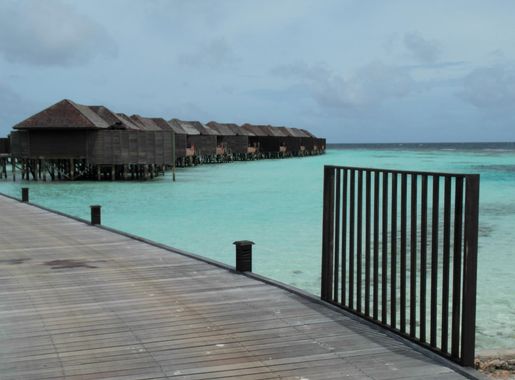
Huvadhoo Atoll: The Hidden Gem of the Maldives
Discover Huvadhoo Atoll in the Maldives: A secluded paradise with untouched beaches, vibrant marine life, and rich local culture for the ultimate tropical escape.
Huvadhoo Atoll, also known as Gaafu Atoll, is one of the largest and most pristine atolls in the Maldives. This remote paradise offers white sandy beaches, crystal-clear waters, and a vibrant underwater world teeming with marine life. Whether you are a diver, a snorkeler, or simply someone looking to unwind, Huvadhoo Atoll is a perfect destination for a tranquil escape. The atoll is less commercialized compared to other parts of the Maldives, making it a great spot for those who want to experience the natural beauty without the crowds. Local culture and tradition are still very much alive here, giving visitors a unique insight into the Maldivian way of life. From traditional fishing practices to local crafts, there is much to explore and appreciate. For adventure seekers, the atoll offers excellent diving and snorkeling opportunities. The coral reefs are home to a diverse range of marine species, including manta rays, sharks, and colorful fish. The atoll's lagoons and channels provide an exciting underwater landscape that is both beautiful and thrilling. Whether you are an experienced diver or a beginner, the underwater world of Huvadhoo Atoll is sure to leave you in awe.
Local tips in Huvadhoo Atoll
- Plan your visit during the dry season from November to April for the best weather.
- Bring your own snorkeling and diving gear as rental options may be limited.
- Respect local customs and dress modestly when visiting inhabited islands.
- Try the local Maldivian cuisine, especially fresh seafood dishes.
- Check for any local festivals or events during your visit to experience Maldivian culture.
Huvadhoo Atoll: The Hidden Gem of the Maldives
Huvadhoo Atoll, also known as Gaafu Atoll, is one of the largest and most pristine atolls in the Maldives. This remote paradise offers white sandy beaches, crystal-clear waters, and a vibrant underwater world teeming with marine life. Whether you are a diver, a snorkeler, or simply someone looking to unwind, Huvadhoo Atoll is a perfect destination for a tranquil escape. The atoll is less commercialized compared to other parts of the Maldives, making it a great spot for those who want to experience the natural beauty without the crowds. Local culture and tradition are still very much alive here, giving visitors a unique insight into the Maldivian way of life. From traditional fishing practices to local crafts, there is much to explore and appreciate. For adventure seekers, the atoll offers excellent diving and snorkeling opportunities. The coral reefs are home to a diverse range of marine species, including manta rays, sharks, and colorful fish. The atoll's lagoons and channels provide an exciting underwater landscape that is both beautiful and thrilling. Whether you are an experienced diver or a beginner, the underwater world of Huvadhoo Atoll is sure to leave you in awe.
When is the best time to go to Huvadhoo Atoll?
Iconic landmarks you can’t miss
Havittha
Explore Havittha, a historical gem in Fuvahmulah, Maldives, revealing the island's rich culture and stunning natural beauty.
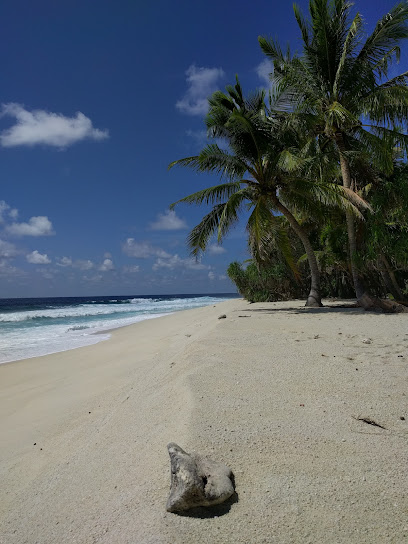
Huvadhu Atoll
Experience the tranquil beauty of Huvadhu Atoll, a stunning island in the Maldives, perfect for relaxation, adventure, and unforgettable marine exploration.

Hoadhadu Water Dam
Explore Hoadhadu Water Dam, a unique historical landmark in Fuvahmulah, showcasing Maldivian engineering and sustainable water management amidst stunning natural beauty.
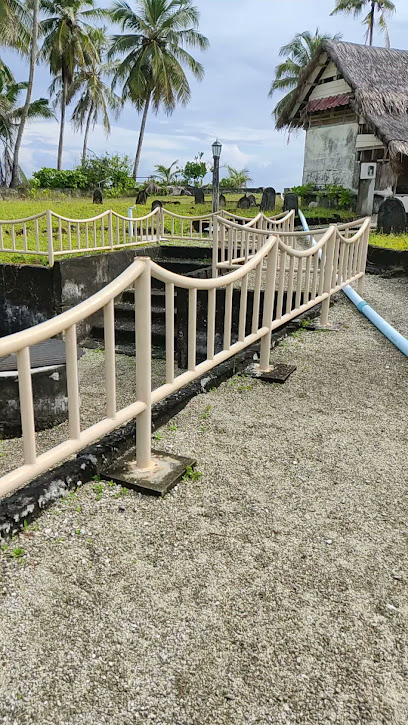
Olhuvaali (Hulhedhdhoo)
Experience the serene beauty and vibrant marine life of Olhuvaali (Hulhedhdhoo), a tranquil paradise in the Maldives perfect for relaxation and adventure.
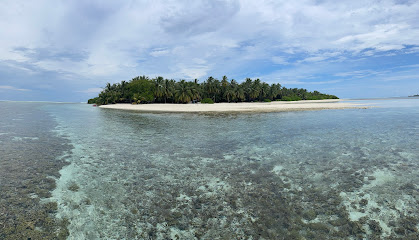
Bodu Havihtha (GDh.Vaadhoo)
Explore the breathtaking beauty and cultural richness of Bodu Havihtha in Vaadhoo, a must-visit destination in the Maldives for every traveler.
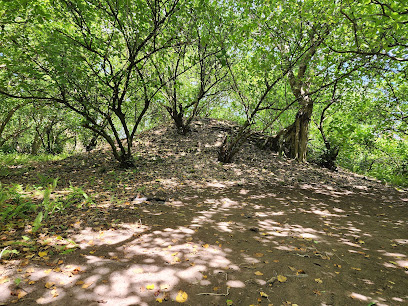
Olhemanthey Maizan
Experience tranquility in the heart of Thinadhoo at Olhemanthey Maizan, a serene park perfect for relaxation and nature walks.
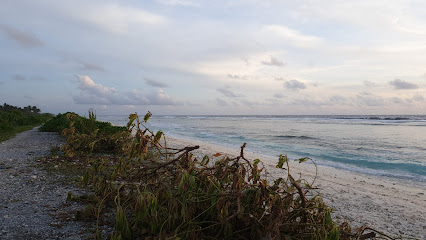
Blue Journeys at Park Hyatt Maldives Hadahaa
Explore the underwater paradise of Gaafu Alifu Atoll with Blue Journeys at Park Hyatt Maldives Hadahaa, where adventure meets luxury.
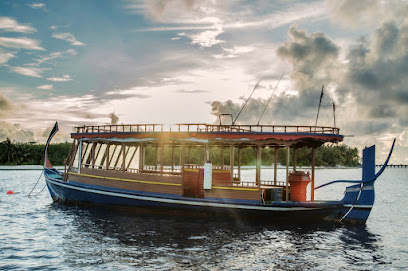
Hauddey Beach
Discover serenity at Hauddey Beach, a pristine paradise in Maamendhoo, Maldives, perfect for relaxation and adventure amidst breathtaking natural beauty.
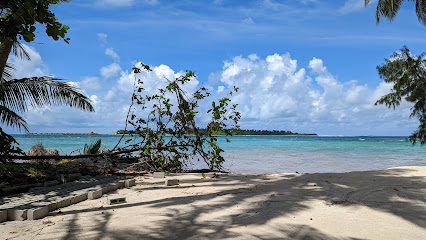
Huvadhoo Gate by Baikan
Discover the cozy charm of Huvadhoo Gate, a must-visit coffee shop in Kolamaafushi, where exceptional brews and a warm atmosphere await.
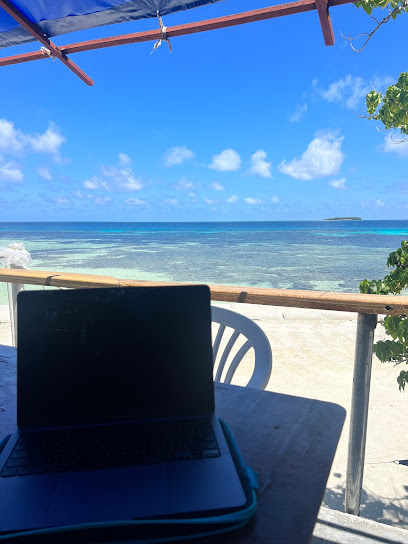
ATHUNARU KODAA
Discover the serene beauty and rich culture of Athunaru Kodaa in Hoandedhdhoo, a must-visit tourist attraction in the Maldives.
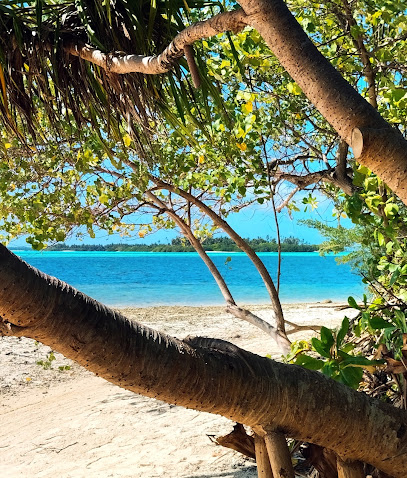
Huvadhu Atholhu
Experience the serene beauty and rich marine life of Huvadhu Atholhu, a stunning atoll in the Maldives, perfect for relaxation and adventure.

Bodu helun thila
Explore the vibrant marine life and stunning coral reefs of Bodu Helun Thila, a hidden underwater paradise in the Maldives.
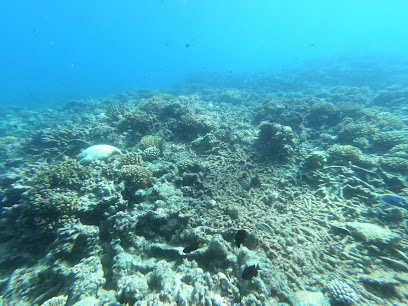
Gdh.Thinadhoo light house (Neru)
Discover the Gdh.Thinadhoo Lighthouse, a historical gem on Thinadhoo Island, blending maritime heritage with breathtaking ocean views.
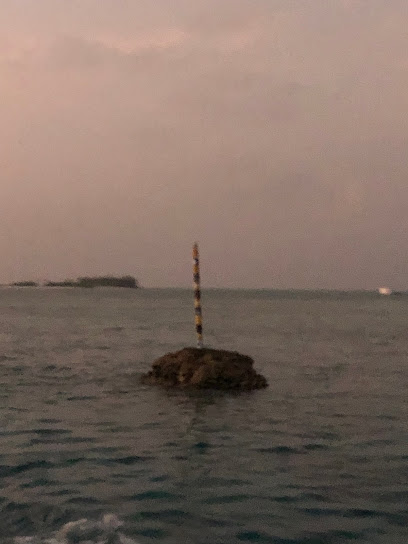
Hut ނަރީތާ
Explore the enchanting Hut 𑑖𑑚𑑖𑑘𑑖𑑘, a historical landmark in Dhevvadhoo that reflects the rich cultural heritage of the Maldives.

Unmissable attractions to see
Odegalla
Discover the breathtaking beauty and rich culture of Odegalla, a hidden tourist attraction in Nilandhoo, Maldives.
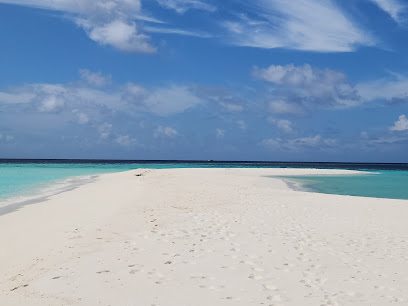
UNDERWATER CORAL GARDEN
Discover the breathtaking underwater life of the Maldives at the Underwater Coral Garden, a vibrant marine haven for snorkelers and divers.
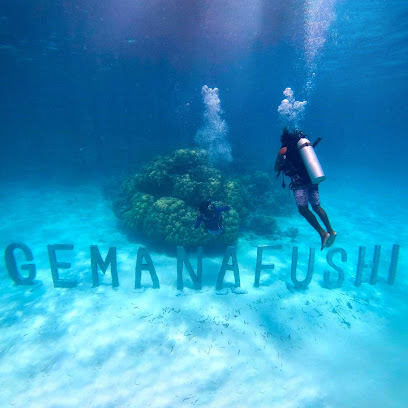
Hauddey Beach
Experience the tranquil beauty of Hauddey Beach, a hidden paradise in Maamendhoo offering pristine sands and vibrant marine life.
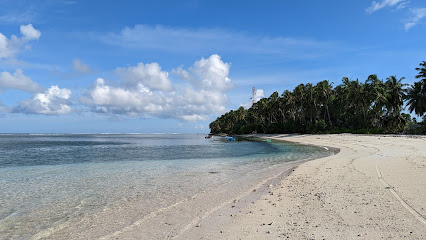
Shark Reef
Explore the mesmerizing underwater paradise of Shark Reef in Gadhdhoo, Maldives, and witness breathtaking marine life in its natural habitat.
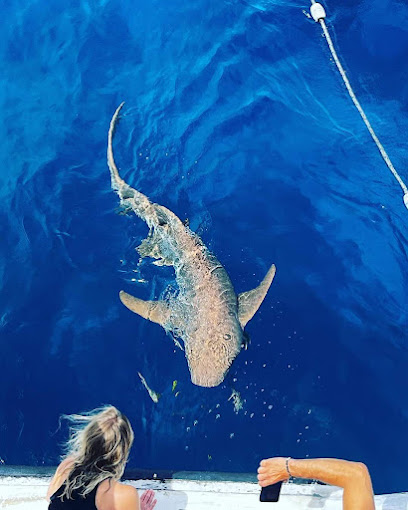
Odegalla Coral Garden
Discover vibrant marine life and stunning coral formations at Odegalla Coral Garden, a must-see underwater paradise in the Maldives.
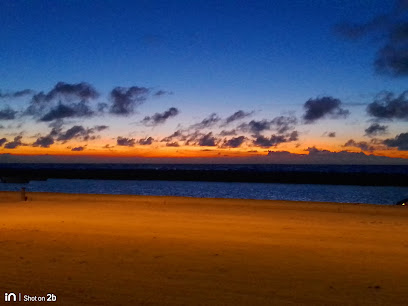
CHIMMY KOREN ISLAND
Experience the serene beauty of Chimmy Koren Island, a hidden gem in the Maldives, perfect for relaxation and cultural exploration.
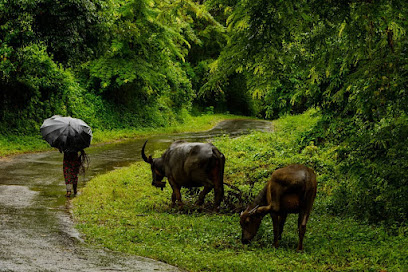
Huttey koda
Discover the peaceful serenity of Huttey Koda Park in Dhevvadhoo, where nature's beauty and tranquility await every traveler.

Gan picnic area
Explore the tranquil Gan Picnic Area in Gadhdhoo, a serene escape amidst lush greenery and natural beauty in the Maldives.

Azaaba Huttaa
Discover the enchanting Azaaba Huttaa in Gemanafushi, Maldives, a serene tourist attraction that offers breathtaking views and an escape into nature's beauty.
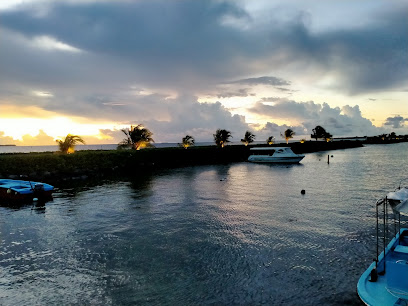
Faanu hutta
Discover the serene beauty of Faanu Hutta in Gadhdhoo, Maldives, a tranquil tourist attraction perfect for relaxation and cultural immersion.

Locals picnic island
Explore the tranquility of Locals Picnic Island in Vaadhoo, a hidden gem perfect for picnics and serene moments in nature.
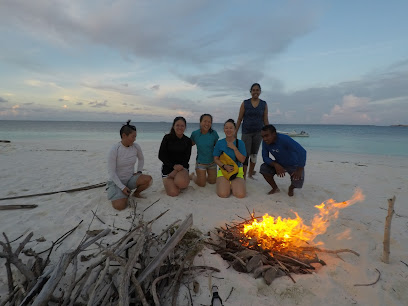
Children’s Park
Explore the serene beauty of Dhevvadhoo's Children's Park, a perfect escape for families seeking relaxation and fun in nature's embrace.

Coral garden1-Dive point
Explore the enchanting underwater wonders at Coral Garden1 in Gadhdhoo, a must-visit dive point in the Maldives for an unforgettable experience.

Bodu helun thila
Discover the underwater paradise of Bodu Helun Thila, where vibrant coral reefs and diverse marine life await in the heart of the Maldives.
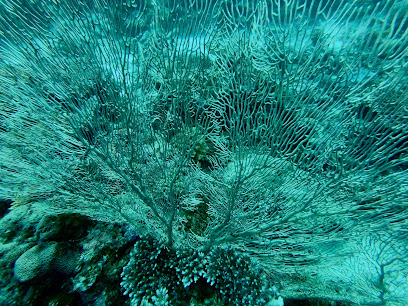
Zero Pavilion
Experience the serene beauty and cultural richness of Zero Pavilion, a mesmerizing tourist attraction in Gemanafushi, Maldives.
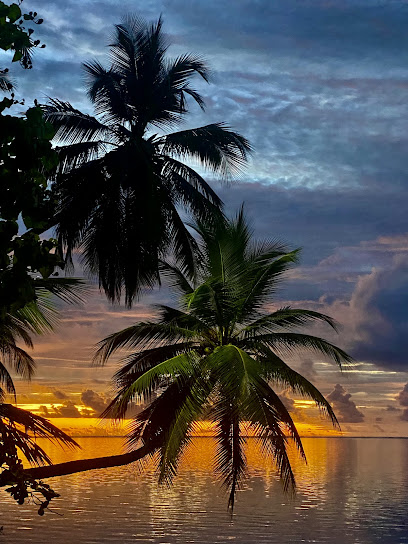
Essential places to dine
The Falhumaa
Experience unparalleled French cuisine at The Falhumaa, an exquisite restaurant perched over crystal-clear waters in the heart of Maldives.
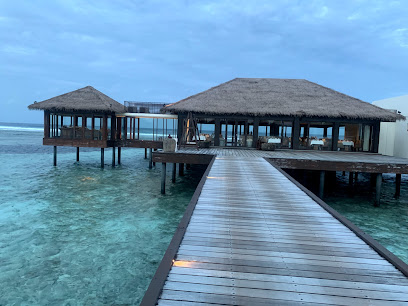
Li Bai / Long Island
Experience the fusion of Cantonese and Italian cuisine at Li Bai / Long Island amidst the stunning backdrop of Maamendhoo's natural beauty.
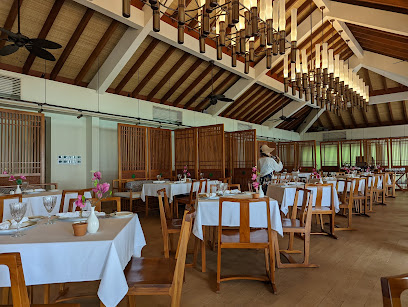
Cool Banana
Discover Cool Banana: A Culinary Gem in Fuvahmulah Offering Delicious Local and International Dishes.
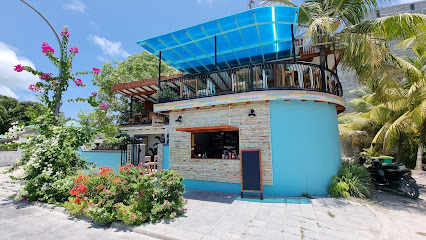
Café Del Sol
Discover culinary bliss at Café Del Sol – your go-to destination for delightful meals and breathtaking views in Maamendhoo, Maldives.
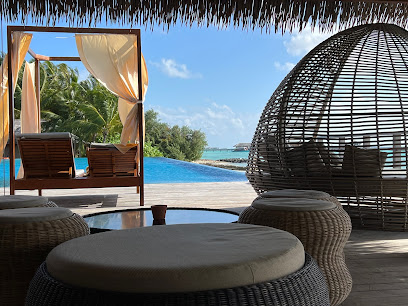
Moodige
Discover authentic Maldivian cuisine at Moodige in Fuvahmulah – where every meal is a delightful journey through local flavors.
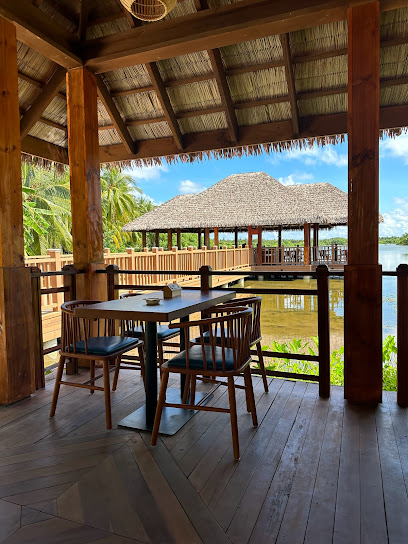
Vistas
Experience exquisite dining at Vistas on Kooddoo Island - where local flavors meet international cuisine amidst stunning ocean views.
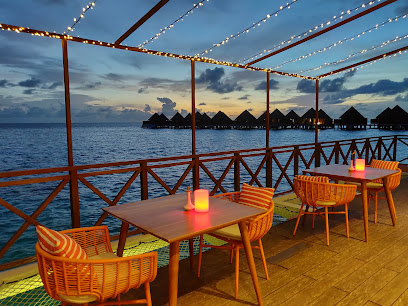
The Dining Room
Discover culinary excellence at The Dining Room in Nilandhoo—where local ingredients meet global flavors for an unforgettable dining experience.
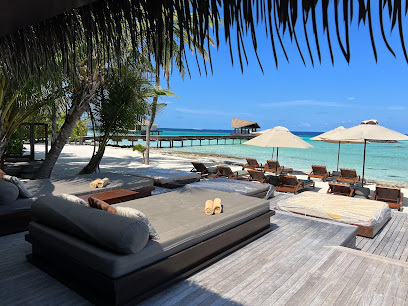
The Beach Bar
Experience exquisite dining at The Beach Bar in Nilandhoo; savor fresh seafood and tropical cocktails by pristine beaches.
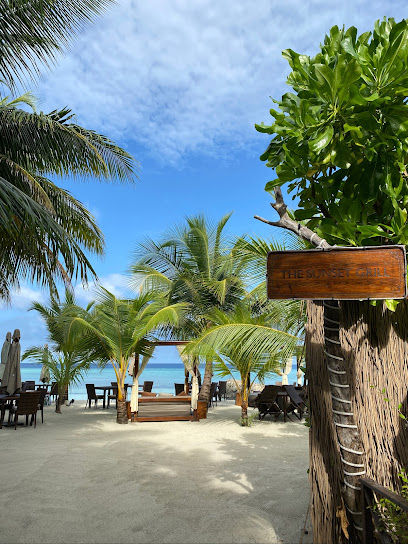
Zero Degree
Experience diverse culinary delights at Zero Degree in Vaadhoo – where Italian, Turkish, Indian, and Maldivian flavors unite for an unforgettable meal.
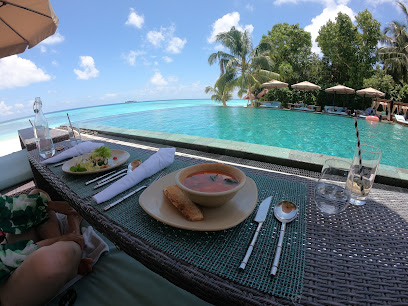
Alita
Experience culinary excellence at Alita on Kooddoo Island – where local flavors meet international flair in a tropical paradise.
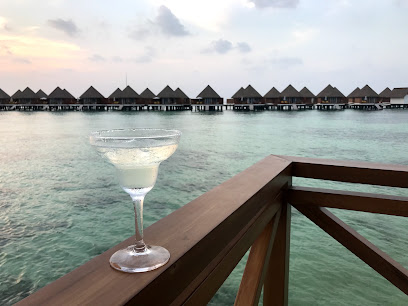
Ocean Breeze
Discover exquisite flavors at Ocean Breeze in Ayada Resorts, where every meal offers breathtaking ocean views and culinary delights.
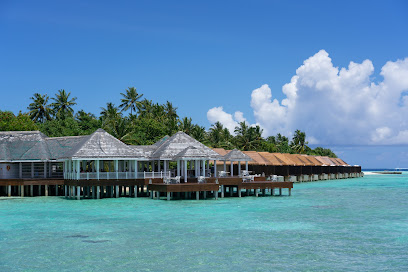
SOUQ OVEN
Experience authentic Italian cuisine at Souq Oven in Viligili – where every dish tells a story of tradition and flavor.
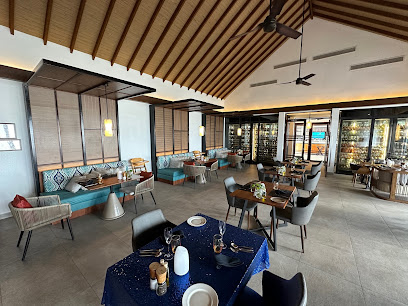
Magu restaurant
Experience exquisite Maldivian cuisine at Magu Restaurant on Vaadhoo Island, where every meal is a celebration of local flavors and stunning views.
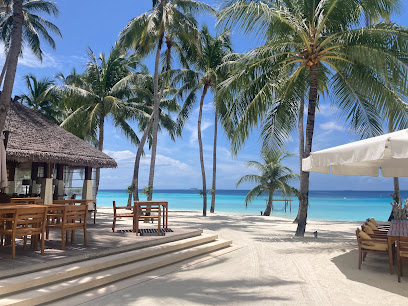
Kai Restaurant
Discover culinary excellence at Kai Restaurant in Vaadhoo, Maldives—where local flavors meet breathtaking ocean views.

Das Edel
Experience exquisite dining at Das Edel in Robinson Maldives—where local flavors meet breathtaking views for an unforgettable meal.
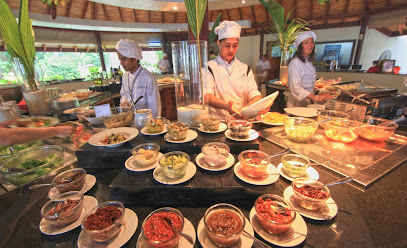
Markets, malls and hidden boutiques
Baivaru
Discover Baivaru in GA. Dhaandhoo, your one-stop convenience store for all essentials and local goods during your Maldivian adventure.

ODEL SHOP
Shop at ODEL SHOP in Maamendhoo for a delightful mix of local and international products, perfect for tourists and locals alike.

Zovee Collection
Discover the vibrant world of fashion and beauty at Zovee Collection in Thinadhoo, where shopping meets local culture and style.
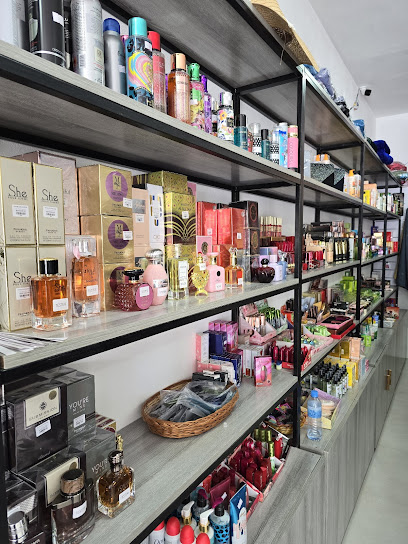
Shine Gift
Explore Shine Gift in Gadhdhoo for unique Maldivian handicrafts and souvenirs that embody the island's cultural richness and artistry.
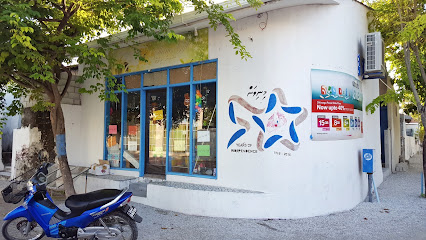
Happy Market Shop - Thinadhoo
Explore the vibrant Happy Market Shop in Thinadhoo for affordable souvenirs and local treasures that capture the essence of the Maldives.
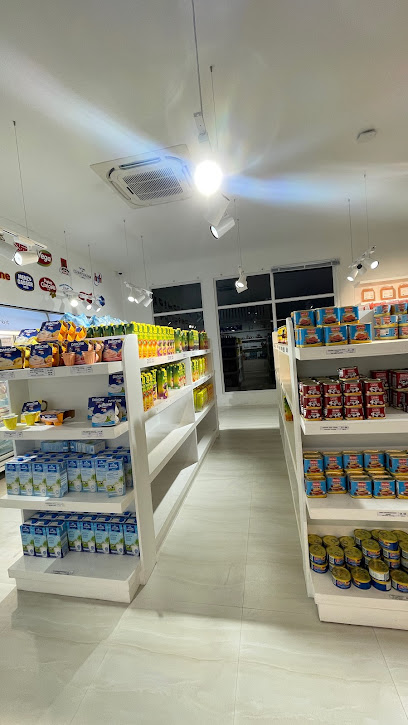
Catena shop
Explore the vibrant offerings of Catena Shop in Vaadhoo, where unique Maldivian products meet friendly service.
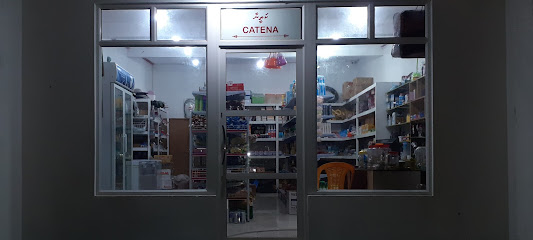
Think Twice
Discover local flavors and international products at Think Twice grocery store in Dhaandhoo, Maldives, your go-to shopping destination.

Two Tey
Experience the best of Gadhdhoo at Two Tey, where convenience meets local charm in the heart of the Maldives.
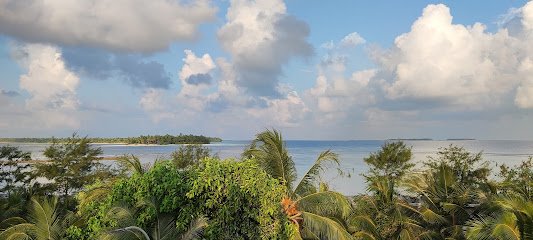
Free Chance Mart
Explore local flavors and essentials at Free Chance Mart, Gadhdhoo's only general store, where community meets convenience.

Dhumashi
Explore the vibrant shopping experience at Dhumashi in Vaadhoo, where local culture meets unique products and friendly service.
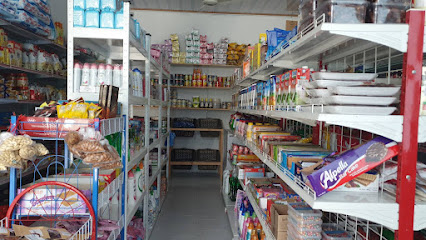
BAAYO
Experience the warmth of local culture at BAAYO, your go-to general store in Kondey, Maldives, featuring unique products and friendly service.

In Design (Zappo's)
Explore unique fashion at In Design, a premier clothing store in G.dhThinadhoo, blending modern styles with local culture for an unforgettable shopping experience.
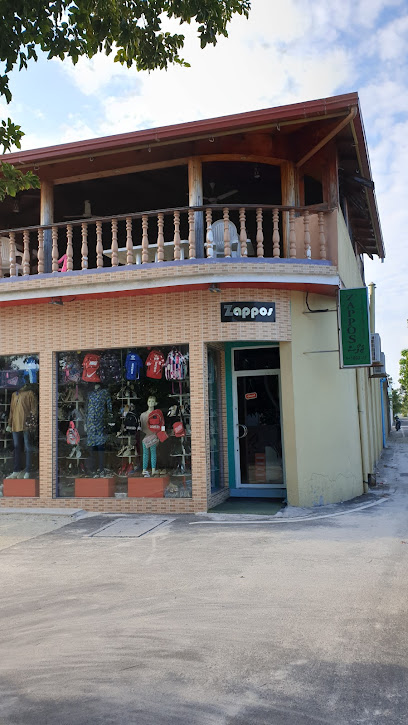
Okey one
Explore Okey One in Maamendhoo for unique Maldivian souvenirs and a touch of local culture in every purchase.
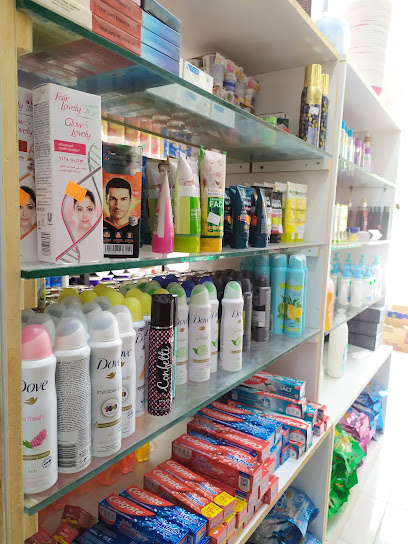
Alakuri
Discover Alakuri, Gadhdhoo's go-to convenience store for all your travel essentials and local delights.
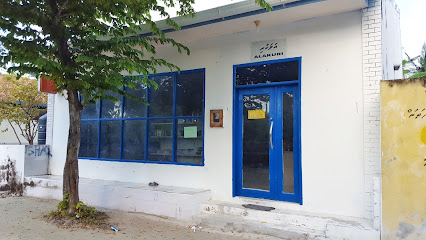
UNIQUE SUPPLIERS MALDIVES
Experience the essence of the Maldives at UNIQUE SUPPLIERS MALDIVES, your go-to general store for authentic local products and souvenirs.

Essential bars & hidden hideouts
Beach Bar
Experience a tropical escape at Beach Bar, where stunning ocean views meet refreshing cocktails for the perfect getaway.
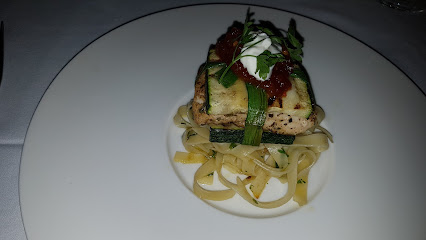
Ile de Joie
Discover the tranquil charm of Ile de Joie, a serene wine bar in the Maldives offering exquisite wines and stunning ocean views.
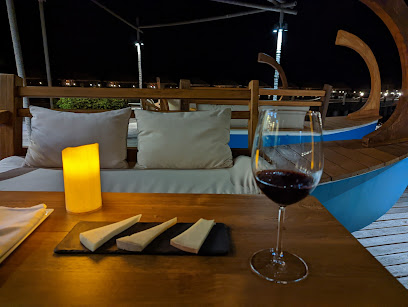
The Beach Bar
Experience culinary bliss at The Beach Bar in the Maldives, where ocean views and exquisite dishes create unforgettable moments.
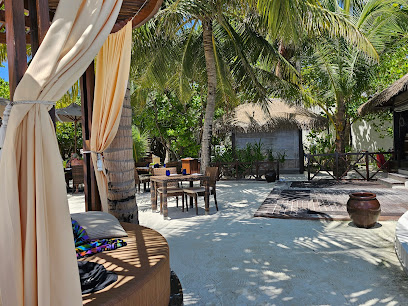
Blue Salt Restaurant
Discover the culinary delights of Blue Salt Restaurant on Konotta Island, where breathtaking views meet exquisite local flavors in a serene setting.
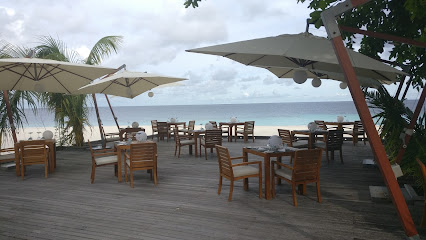
Pool Bar
Discover the ultimate relaxation spot at the Pool Bar, where refreshing cocktails and stunning views come together in a serene oasis.
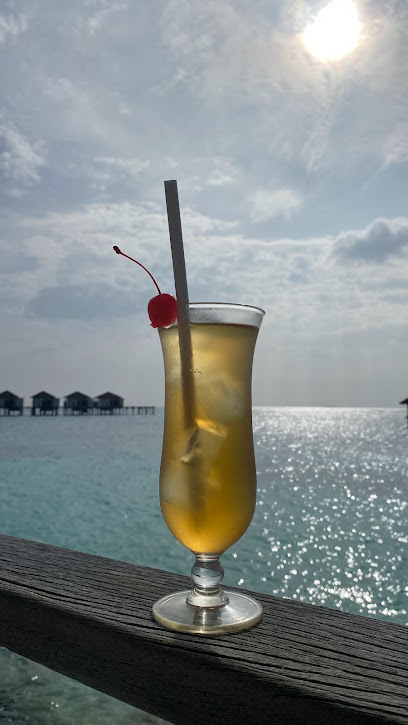
The Hub
Experience the vibrant nightlife of Viligili at The Hub, where delicious drinks and great company create unforgettable moments.
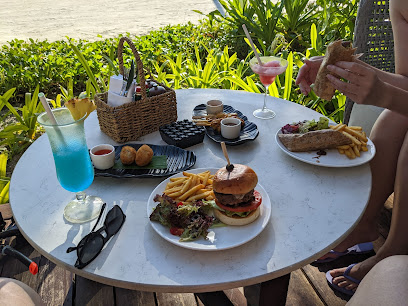
Das Edel
Experience the finest dining at Das Edel in the Maldives, where exquisite cuisine meets stunning ocean views in a luxurious setting.
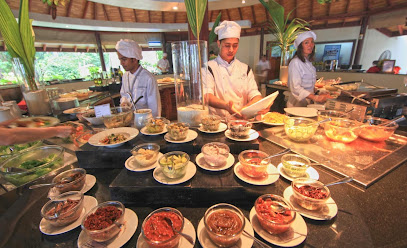
Main Bar
Experience the vibrant atmosphere of Main Bar, your tropical oasis for relaxation and socializing in the heart of the island.
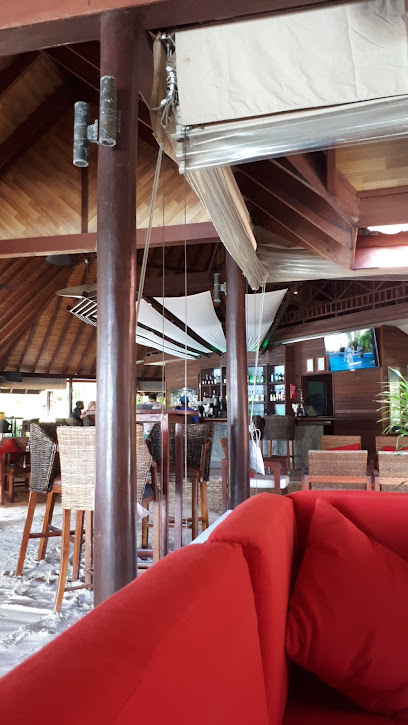
Pool bar
Experience the ultimate relaxation at Kooddoo's Pool Bar, where refreshing drinks meet breathtaking views in a tropical paradise.
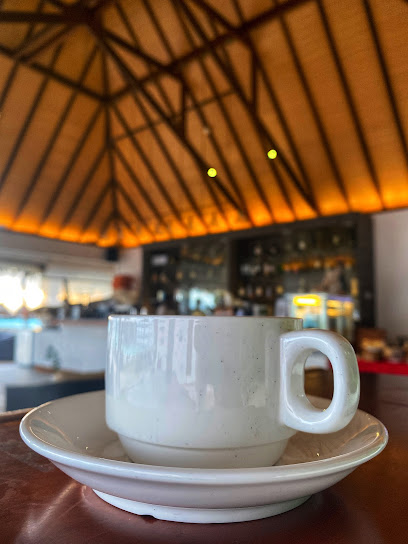
SOL Rising
Discover SOL Rising, an enchanting bar in the Maldives, where stunning views and refreshing cocktails create the perfect island experience.
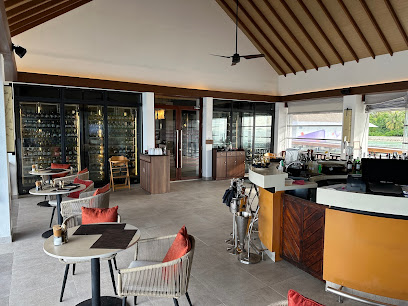
Squad Hangout
Discover the laid-back charm of Squad Hangout in Fuvahmulah, a perfect bar for relaxation and socializing with fellow travelers.

The Bar at Park Hyatt Maldives Hadahaa
Discover ultimate relaxation at The Bar at Park Hyatt Maldives Hadahaa, where exquisite cocktails and stunning ocean views create a perfect tropical escape.
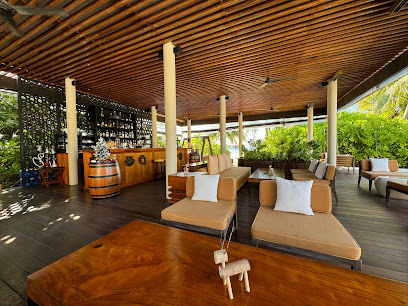
The Dining Room at Park Hyatt Maldives Hadahaa
Experience culinary excellence at The Dining Room, where local flavors meet international cuisine in a breathtaking Maldivian setting.
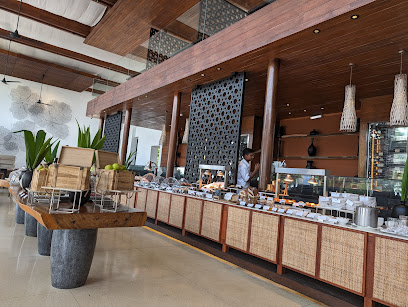
Yuzu, Nikkei Cuisine
Experience the exquisite flavors of Nikkei cuisine at Yuzu on Meradhoo Island, where Japanese tradition meets Peruvian passion in a stunning island setting.
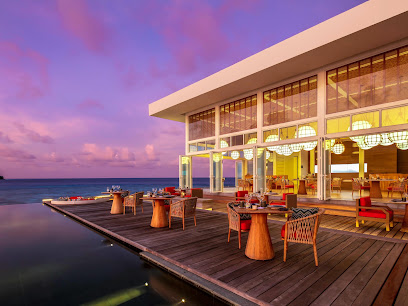
Ahthu kadu
Discover the vibrant atmosphere and local flavors at Ahthu Kadu, the ultimate bar experience in Gadhdhoo, Maldives.

History of Huvadhoo Atoll
-
Huvadhoo Atoll, known locally as Gaafu Alifu and Gaafu Dhaalu, boasts evidence of ancient settlements dating back to before the 2nd century BC. Archaeological findings, including pottery, tools, and remnants of early architecture, suggest that the atoll was inhabited by early settlers who relied on fishing and basic agriculture for their livelihoods. These early communities laid the foundation for the rich cultural tapestry that Huvadhoo Atoll enjoys today.
-
The spread of Buddhism in the Maldives during the 3rd century BC significantly impacted Huvadhoo Atoll. Excavations have uncovered Buddhist relics, including stupas, statues, and inscriptions, particularly in the islands of Gan and Dhaandhoo. These findings indicate that the atoll was an important center for Buddhist worship and learning before the arrival of Islam in the 12th century. The remnants of ancient Buddhist monasteries continue to draw the interest of historians and archaeologists.
-
The Maldives, including Huvadhoo Atoll, underwent a profound cultural transformation with the introduction of Islam in 1153 AD. The conversion to Islam, led by the North African Islamic scholar Abu al-Barakat, marked the end of the Buddhist era and initiated a new chapter of religious and cultural identity. Mosques and other Islamic structures were built, many of which still stand today, showcasing intricate coral stone carvings and traditional Maldivian architecture.
-
During the 16th and 17th centuries, Huvadhoo Atoll, like much of the Maldives, witnessed the arrival of European colonial powers, including the Portuguese, the Dutch, and the British. These encounters brought about significant changes in trade, politics, and social structures. The Portuguese briefly occupied the atoll, leaving behind a legacy of resistance and resilience among the local population. The influence of European colonialism can still be seen in certain aspects of the local culture and history.
-
In the late 19th and early 20th centuries, the Maldives, including Huvadhoo Atoll, became a British protectorate. This period saw the introduction of modern administrative systems, education reforms, and infrastructure development. The British influence helped shape the atoll's political and social landscape, paving the way for its transition to independence in 1965. The legacy of the British era is evident in the atoll's modern educational institutions and government structures.
-
Huvadhoo Atoll is renowned for its vibrant traditional arts and crafts, including intricate mat weaving, lacquer work, and boat building. The atoll's artisans have preserved these ancient skills, passing them down through generations. Festivals such as Eid and the National Day are celebrated with great enthusiasm, featuring traditional music, dance, and feasts. These cultural practices offer a glimpse into the rich heritage and communal spirit of the atoll's inhabitants.
-
Huvadhoo Atoll is part of one of the world's largest and most diverse coral reef systems, making it a crucial area for marine biodiversity. Over the years, the atoll has become a focal point for conservation efforts aimed at protecting its delicate marine ecosystems. Initiatives led by local communities, NGOs, and government agencies focus on sustainable fishing practices, coral reef restoration, and the preservation of endangered species. These efforts are vital for maintaining the atoll's natural beauty and ecological balance.
Huvadhoo Atoll Essentials
-
Huvadhoo Atoll is located in the southern part of the Maldives. The nearest international airport is Velana International Airport in Malé. From Malé, you can take a domestic flight to the Kaadedhdhoo Airport, which serves the Huvadhoo Atoll. The flight duration is approximately 1 hour. Alternatively, there are speedboat and ferry services available from Malé to Huvadhoo Atoll, though these options are less frequent and take significantly longer.
-
Transportation within Huvadhoo Atoll typically involves speedboats, dhonis (traditional Maldivian boats), and ferries. For inter-island travel, speedboats are the fastest and most convenient option. Local ferries are also available but might not operate daily. Bicycles and motorbikes are commonly used on larger islands for getting around. Renting a bicycle can be a great way to explore at your leisure.
-
The official currency in the Maldives is the Maldivian Rufiyaa (MVR). However, US dollars are widely accepted in most hotels, resorts, and tourist areas. Credit cards are also commonly used, especially in higher-end establishments. It is advisable to carry some cash for smaller transactions, particularly on less developed islands. ATMs are limited, so ensure you have sufficient funds before traveling to more remote areas.
-
Huvadhoo Atoll is generally a safe destination for tourists. Nonetheless, it's important to take standard travel precautions. Avoid isolated areas after dark, and always keep an eye on your belongings in crowded places. Petty thefts can occur, so it's best to use hotel safes for valuables. There are no specific high-crime areas targeting tourists, but staying vigilant is always advisable.
-
In case of emergency, dial 119 for police assistance. For medical emergencies, dial 102 to reach an ambulance. Huvadhoo Atoll has limited medical facilities, so serious cases might require evacuation to Malé. It's highly recommended to have travel insurance that covers medical emergencies, including evacuation. Pharmacies are available on larger islands for over-the-counter medications.
-
Fashion: Do dress modestly when outside of resort areas. Avoid wearing revealing clothing, especially in local villages. Religion: Do respect the Islamic culture. Dress modestly and avoid public displays of affection. Public Transport: Do be courteous and patient. Ferries and boats operate on a relaxed schedule. Greetings: Do greet locals with a smile and a slight bow of the head. A handshake is also appropriate. Eating & Drinking: Do try local Maldivian dishes. Avoid eating with your left hand, as it is considered impolite.
-
To experience Huvadhoo Atoll like a local, visit the local markets where you can purchase fresh seafood and traditional Maldivian goods. Engage with locals; they are usually friendly and willing to share stories about their culture and way of life. Don't miss out on attending a 'Boduberu' performance, a traditional Maldivian drumming and dance show. Also, take the opportunity to explore the lesser-known islands for a more authentic experience.
Trending Landmarks in Huvadhoo Atoll
Nearby Cities to Huvadhoo Atoll
-
Things To Do in Dhigurah
-
Things To Do in Fulidhoo
-
Things To Do in Guraidhoo
-
Things To Do in Malé
-
Things To Do in Hulhumalé
-
Things To Do in Ukulhas
-
Things To Do in Huraa
-
Things To Do in Thulusdhoo
-
Things To Do in Thoddoo
-
Things To Do in Kanyakumari
-
Things To Do in Trivandrum
-
Things To Do in Hikkaduwa
-
Things To Do in Galle
-
Things To Do in Unawatuna
-
Things To Do in Bentota


